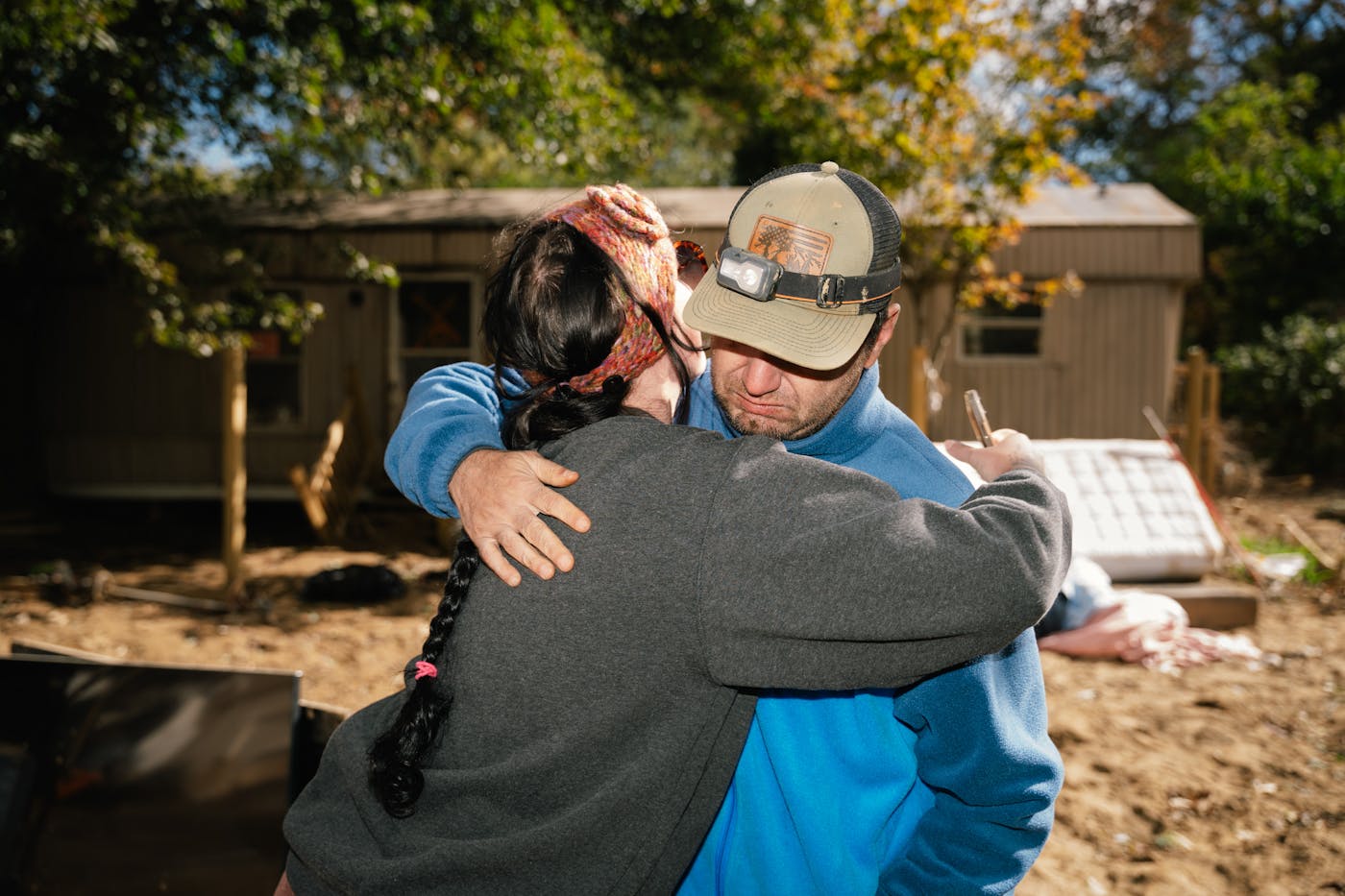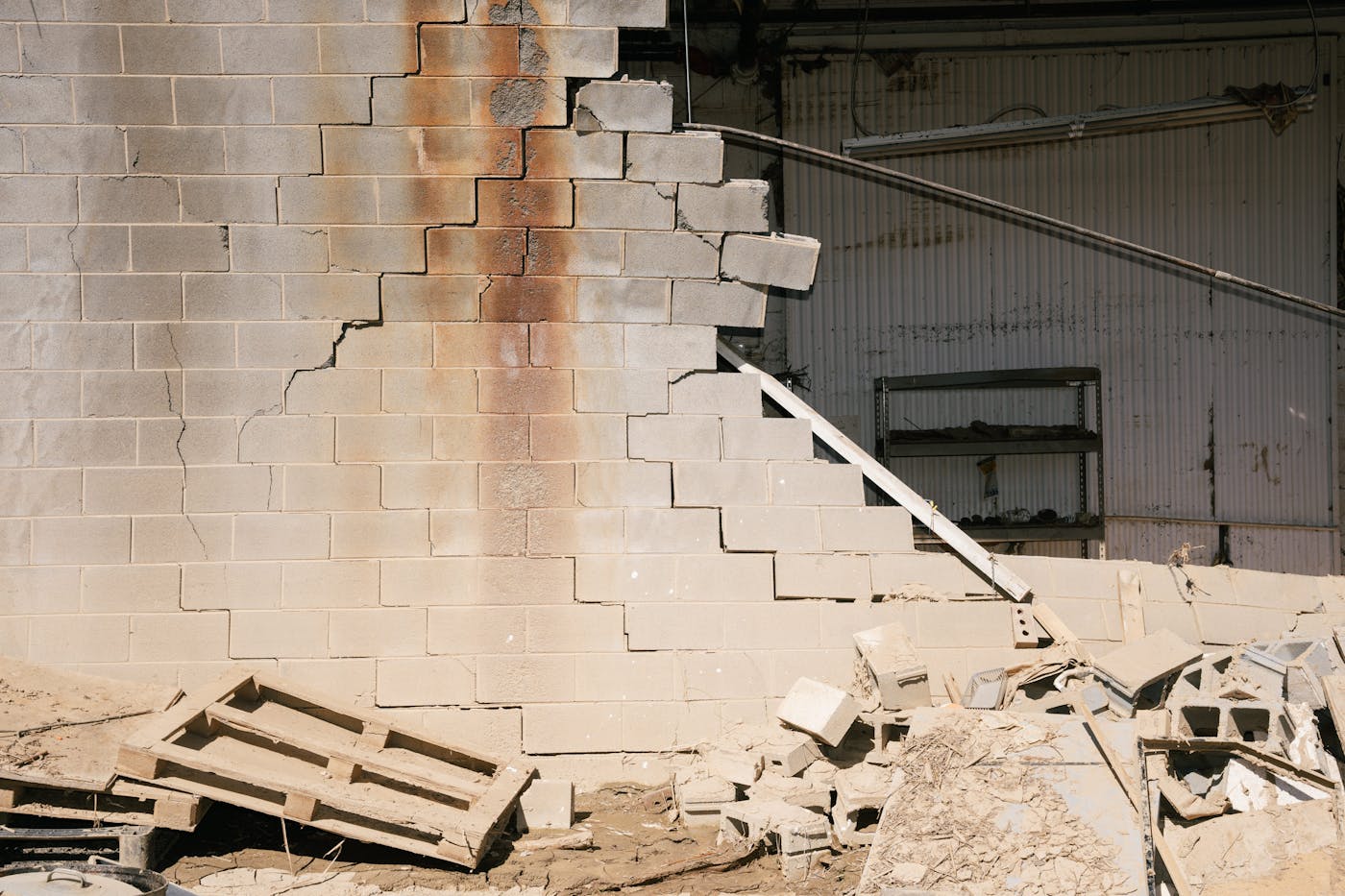No Safe Haven From Helene
When a storm is named, it can take on an unearthly humanity of its own, become an object of hatred and dread like a person can. Like Hurricane Helene, who tore through the Blue Ridge Mountains of southern Appalachia in late September, after coming up from the Gulf of Mexico. She left particular devastation across western North Carolina and eastern Tennessee, as 40 trillion gallons of rain fell in the course of a few nights. Behind her, the rivers came up, and the mountains came down.The flash flooding and landslides caused by Helene claimed 102 lives in North Carolina alone, and a total of more than 230 throughout a six-state region. Governor Roy Cooper’s administration estimated at one point that 126,000 homes may have been damaged. Because of the rugged geography, hundreds found themselves isolated by washouts and debris. Many were without power, clean water, and the internet for weeks. A month later, some were still without at least one of the three, and the city of Asheville is unlikely to see drinkable water until December.Western North Carolina was sometimes marketed as a “climate haven,” but Asheville has flooded before, though not for over a hundred years.Was it unprecedented? Not exactly. Western North Carolina was sometimes marketed as a “climate haven,” but Asheville has flooded before, though not for over a hundred years. Previous disasters throughout Appalachia, like the West Virginia floods of 2016 or the devastating eastern Kentucky floods of 2022, proved that mountains are susceptible to deadly flash flooding and landslides. The region is also infrastructurally precarious, with aging water lines and a vulnerable grid. And the communities are socially vulnerable as well: Hospitals have shuttered, economies are reliant on low-wage service work, income inequality and the cost of living are increasing. Inadequate zoning regulations and building standards have compounded environmental risks. Meanwhile, just 0.5 percent of single-family homes in western North Carolina have flood insurance, and the maximum award in housing assistance from the Federal Emergency Management Agency is only $42,500.Residents of the river towns of Marshall, Swannanoa, and many others are coming to grips with the scale of loss and digging themselves out of the muck at the same time. Though public officials and FEMA are present, there’s still a pervasive question: If not for neighbors, who would have mucked out the houses or cleaned the streets? Volunteer groups like Marshall-based Rural Organizing and Resilience, or ROAR, and tiny home company Nanostead have become information hubs, tool libraries, and volunteer dispatch centers. As uncertainties about the public health consequences of the cleanup have continued to swirl, and some involved have shown signs of respiratory and skin ailments, community members have done their best to keep one another safe and informed.

When a storm is named, it can take on an unearthly humanity of its own, become an object of hatred and dread like a person can. Like Hurricane Helene, who tore through the Blue Ridge Mountains of southern Appalachia in late September, after coming up from the Gulf of Mexico. She left particular devastation across western North Carolina and eastern Tennessee, as 40 trillion gallons of rain fell in the course of a few nights. Behind her, the rivers came up, and the mountains came down.
The flash flooding and landslides caused by Helene claimed 102 lives in North Carolina alone, and a total of more than 230 throughout a six-state region. Governor Roy Cooper’s administration estimated at one point that 126,000 homes may have been damaged. Because of the rugged geography, hundreds found themselves isolated by washouts and debris. Many were without power, clean water, and the internet for weeks. A month later, some were still without at least one of the three, and the city of Asheville is unlikely to see drinkable water until December.
Was it unprecedented? Not exactly. Western North Carolina was sometimes marketed as a “climate haven,” but Asheville has flooded before, though not for over a hundred years. Previous disasters throughout Appalachia, like the West Virginia floods of 2016 or the devastating eastern Kentucky floods of 2022, proved that mountains are susceptible to deadly flash flooding and landslides. The region is also infrastructurally precarious, with aging water lines and a vulnerable grid. And the communities are socially vulnerable as well: Hospitals have shuttered, economies are reliant on low-wage service work, income inequality and the cost of living are increasing. Inadequate zoning regulations and building standards have compounded environmental risks. Meanwhile, just 0.5 percent of single-family homes in western North Carolina have flood insurance, and the maximum award in housing assistance from the Federal Emergency Management Agency is only $42,500.
Residents of the river towns of Marshall, Swannanoa, and many others are coming to grips with the scale of loss and digging themselves out of the muck at the same time. Though public officials and FEMA are present, there’s still a pervasive question: If not for neighbors, who would have mucked out the houses or cleaned the streets? Volunteer groups like Marshall-based Rural Organizing and Resilience, or ROAR, and tiny home company Nanostead have become information hubs, tool libraries, and volunteer dispatch centers. As uncertainties about the public health consequences of the cleanup have continued to swirl, and some involved have shown signs of respiratory and skin ailments, community members have done their best to keep one another safe and informed.









